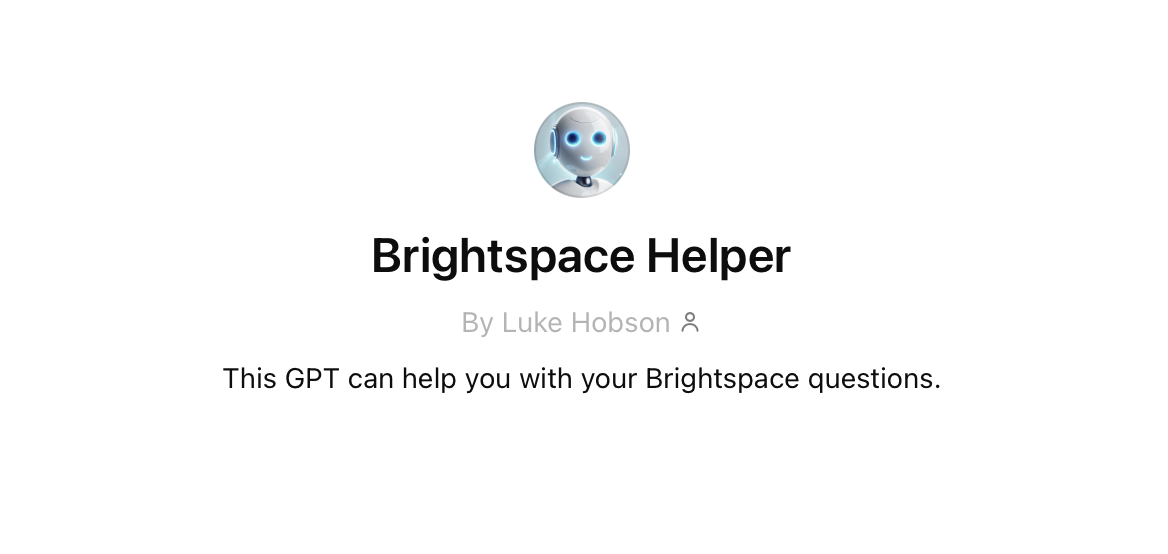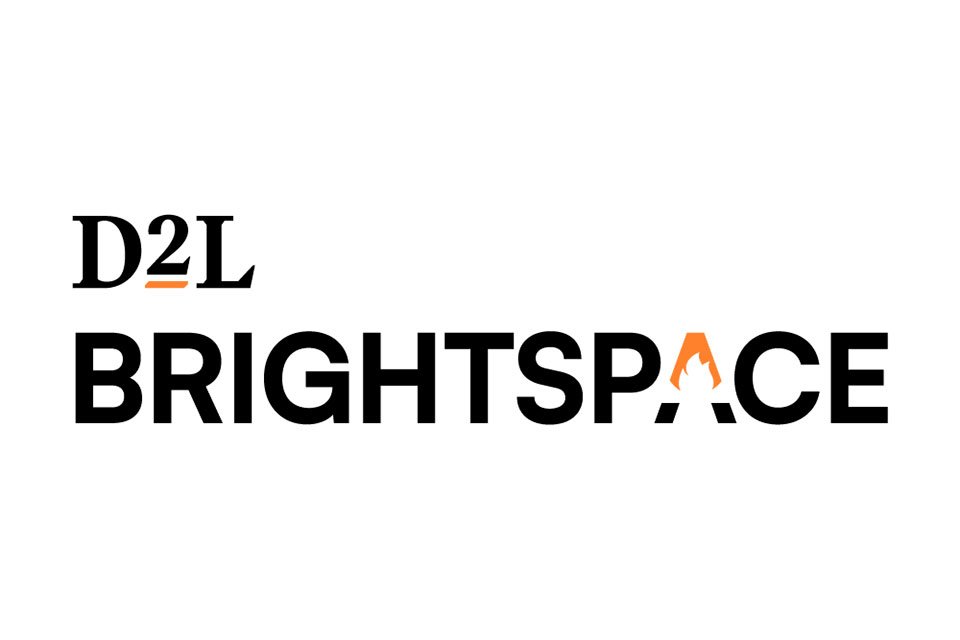Real Instructional Design Cases Using GPTs
One of the most significant updates going from GPT3.5 to GPT4 was the ability to create your own custom GPTs. It was an idea that sounded interesting, but I was trying to think about how to use it for real-world purposes. Many people use Generative AI for entertainment, but I wanted to figure out how I could use a custom GPT to better serve aspiring instructional designers, current instructional designers, and my instructional design students. After experimenting with a few ideas, you can try out these GPTs for yourself to help with your designs,.
So first, why should we even bother to make a GPT? ChatGPT is already connected to the internet and can pull information from everywhere. Wouldn’t this be seen as another layer of complexity for users? Actually, it’s the opposite. One of the things I’ve found from speaking with people who try ChatGPT, Gemini, Claude, or any other LLM is that it’s a bit overwhelming and they are unsure of what to do next. Imagine the first time you used Google and you were like so… what do I search for? It’s the same concept. I’ve also found that the exact opposite to be true. Someone uses ChatGPT and is unimpressed by a single response so they give up on using it entirely. Having a GPT designed to provide more detail from the start can change their opinion.
Another feature that I love is that you can customize the language, tone, and data with how your users will be interacting with the GPT. This has huge advantages if you believe there is misinformation online (shout out learning styles) and want your users to have the right context. It gives you more control, and as someone who has been fighting instructional design myths for years, it’s nice to be able to make a correction and have it become a permanent fix within the GPT.
So, let’s talk about 3 real-world use cases for GPTS!
Your UDL Pal
One massive benefit of Generative AI that I truly believe in is the ability to improve accessibility within our learning experiences. Unless you have been trained on how to think this way, you may not be aware of how many nuances and details there are when trying to follow a framework like UDL. Most folks I have spoken with are not against applying UDL principles, they simply don’t know how to apply them. I wanted to be able to help with these issues so the first GPT I created was called, Your UDL Pal. The idea was simple: allow users to gain insights and perspectives on how to make their designs more UDL friendly.
The process was a bit different when custom GPTs were first released. The steps went as followed:
Give it a name
Add the logo
Describe what the GPT should do
Mention particular topics to include
This was then usually followed by a series of prompts and follow up questions to finalize the GPT along with a preview to test things out. When the GPT asked what should be included pertaining to UDL, I said that I wanted everything possible to be in this GPT. Eagerly, I went into the preview mode to give it a test run, and immediately, was disappointed.
When I asked to define for me UDL, it mentioned being able to design learning experiences for all people, which is great, but then it said, according to their learning styles. After whipping my laptop out the window and having to buy a second laptop, I wanted to see if it was possible to tell the GPT what not to include. I went back into the edit mode and stated, if a user asks about learning styles, I want you to gently remind them that learning styles are not backed by credible evidence and are a myth in the L&D space. If they want resources to learn more, you can find articles and videos to send to them. Back into the preview mode I went to ask about learning styles, and was pleasantly surprised to see that it followed my instructions.
Now, it was time to launch this and give it a real spin. I uploaded a former syllabus and asked it to review my content through a UDL lens and to see how I can improve my language. Sure enough, it gave a few recommendations. I then asked for it be my counterpoints to a fake argument about why UDL is too costly, time consuming, and unnecessary. The GPT created 10 reasons against my arguments and I knew I was on to something as this is a common conversation with IDs and their leadership teams and SMEs. It’s been out now for several months and over 200 of you have used it, which is awesome!
Instructional Design Interview Coach
If you picked up the latest edition of the textbook Trends and Issues in Instructional Design and Technology, you’ll see my chapter about artificial intelligence. In the text, I described about how I’ve been working on creating a new instructional design interview simulation. I kept on hearing from you about how you would love to have practice interviewing before the actual interview. Based on that feedback, I realized that I should create a simulation to mock a typical instructional design interview. The idea would be to have a downloadable simulation for you to answer common questions, receive feedback, and then receive a score at the end. It was great in theory, but it never became exactly what I had in mind. One major obstacle was that every time I had to make a change, it felt like I was starting over from scratch. After tinkering for months, it remained on my to do list and never saw the light of day.
It wasn’t until GPT4o’s update that I decided to give this another shot and see with the latest update, if I could turn this into a real product. I requested for the GPT to ask common questions based around topics pertaining to learning design, collaborating with SMEs, project management, research, and technology. It would then give feedback based on the responses and could give references if the users wanted to read more about the topics.
After a trial run, I was shocked by how accurate the questions were and the feedback to my responses. If you don’t have someone to mock interview with, I can’t stress enough how great of a substitute this is. Obviously, it cannot replace the real interviewer and interviewers are not always going to ask the questions that comes from the GPT. You also very well may have an interviewer who does not know what they are looking for in a designer, has never interviewed a designer before, or is just plain bad at interviewing. For common interview questions, this is a great place to start for preparing for your next interview.
LMS Helper
As many of you know, I teach courses about instructional design at Instructional Design Institute and the University of Miami Online. In these courses, I teach students how to design learning experiences through an LMS called, Brightspace. Even with experience using any LMS, there is still a learning curve and trying to explore all the capabilities of one LMS compared to another. I’ve tried a few different ways to help the students learn how to build on Brightspace with live demos and YouTube playlists. However, it’s difficult to cover every single function.
Recently, one of the students in IDI asked if there was a list or repository of all the tools Brightspace had and then that’s when the idea hit me. What if I built an LMS Helper GPT? So off I went. I asked the GPT to be able to provide instructions with anything pertaining to building in Brightspace. If it didn’t know the answer, it could find a resource to send to the student. It was pretty good in the preview mode, so now it was time for the real test.
I said, “I’m trying to create a survey in Brightspace and need help.” Sure enough, I was looking at a step by step walk through on how to create a survey. You can see my exact conversation with this link. What about how to resize an image or upload a video? Same thing happened. I was so surprised by how well it worked that I sent it to D2L team members and asked them to try it out. So far, so good!
This then gave me the idea of what about for other LMSs I use? For my day job, the courses are hosted on edX. We also hired a new designer who is learning about edX and I thought maybe this could be a way to give him tutorials on how to build componenets? Once again, so far, so good. We are continuing to put this to the test, but for initial findings, it’s been incredibly helpful. If you have to teach others how to use an LMS at your institution, I would recommend either using one of these or creating your own.
Well folks, that’s all I have for you! What kind of GPT have you created? What GPT will you create next? Let me know!
A huge thank you to our sponsors! Consider supporting those who support our show!











